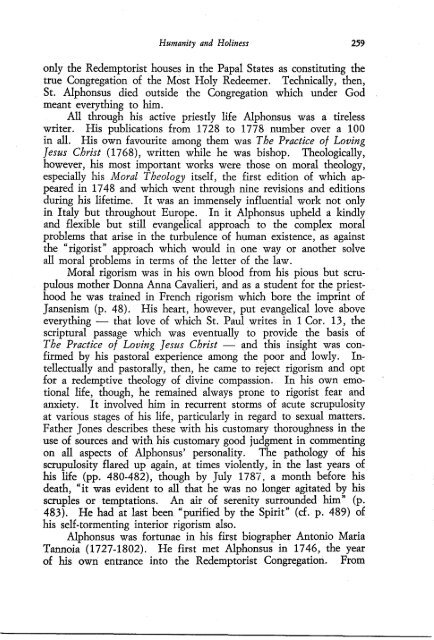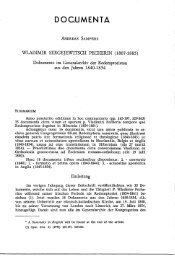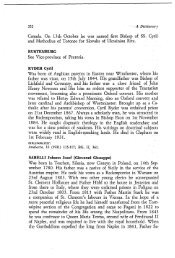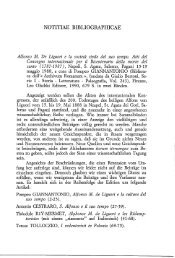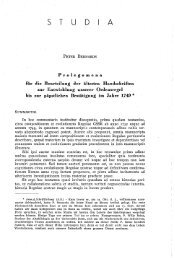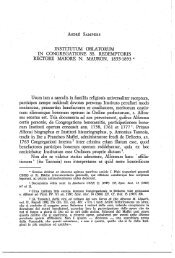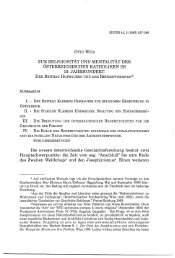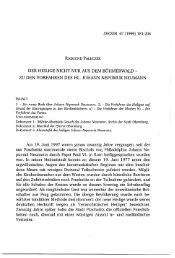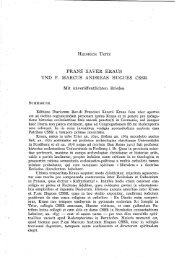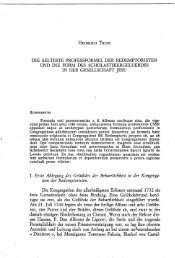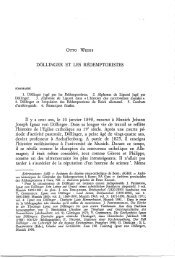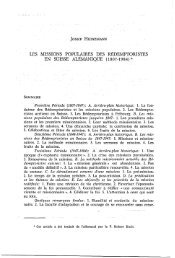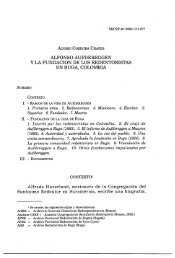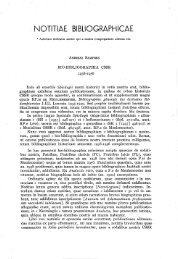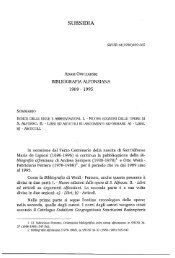pdf intero - Sant'Alfonso e dintorni
pdf intero - Sant'Alfonso e dintorni
pdf intero - Sant'Alfonso e dintorni
You also want an ePaper? Increase the reach of your titles
YUMPU automatically turns print PDFs into web optimized ePapers that Google loves.
Humanity and Holiness 259<br />
only the Redemptorist houses in the Papal States as constituting the<br />
true Congregation of the Most Holy Redeemer. Technically, then,<br />
St. Alphonsus died outside the Congregation which under God<br />
meant everything to him.<br />
All through his active priestly life Alphonsus was a tireless<br />
writer. His publications from 1728 to 1778 number over a 100<br />
in ali. His own favourite among them was The Practice of Loving<br />
]esus Christ (1768), written while he was bishop. Theologically,<br />
however, his most important works were those on moral theology,<br />
especially his Moral Theology itself, the first edition of which appeared<br />
in 17 48 and which went through nine revisions and editions<br />
during his lifetime. It was an immensely influential work not only<br />
in Italy but throughout Europe. In it Alphonsus upheld a kindly<br />
and flexible but still evangelica! approach to the complex moral<br />
problems that arise in the turbulence of human existence, as against<br />
the "rigorist" approach which would in one way or another sol ve<br />
all moral problems in terms of the letter of the la w.<br />
Moral rigorism was in his own blood from his pious but scrupulous<br />
mother Donna Anna Cavalieri, and as a student for the priesthood<br />
he was trained in French rigorism which bore the imprint of<br />
Jansenism (p. 48). His heart, however, put evangelicallove above<br />
everything - that love of which St. Paul writes in l Cor. 13, the<br />
scriptural passage which was eventually to previde the basis of<br />
The Practice of Loving ]esus Christ - and this insight was confirmed<br />
by his pastoral experience among the poor and lowly. Intellectualiy<br />
and pastorally, then, he carne to reject rigorism and opt<br />
for a redemptive theology of divine compassion. In his own emotional<br />
life, though, he remained always prone to rigorist fear and<br />
anxiety. It involved him in recurrent storms of acute scrupulosity<br />
at various stages of his life, particularly in regard to sexual matters.<br />
Father Jones describes these with his customary thoroughness in the<br />
use of sources and with his customary good judgment in commenting<br />
on all aspects of Alphonsus' personality. The pathology of his<br />
scrupulosity flared up again, at times violently, in the last years of<br />
his life (pp. 480-482), though by July 1787, a month before his<br />
death, "i t was evident to ali that he was no longer agitated by his<br />
scruples or temptations. An air of serenity surrounded him" (p.<br />
483). He had at last been "purified by the Spirit" (cf. p. 489) of<br />
his self-tormenting interior rigorism also.<br />
Alphonsus was fortunae in his first biographer Antonio Maria<br />
Tannoia (1727-1802). He first met Alphonsus in 1746, the year<br />
of his own entrance into the Redemptorist Congregation. From


